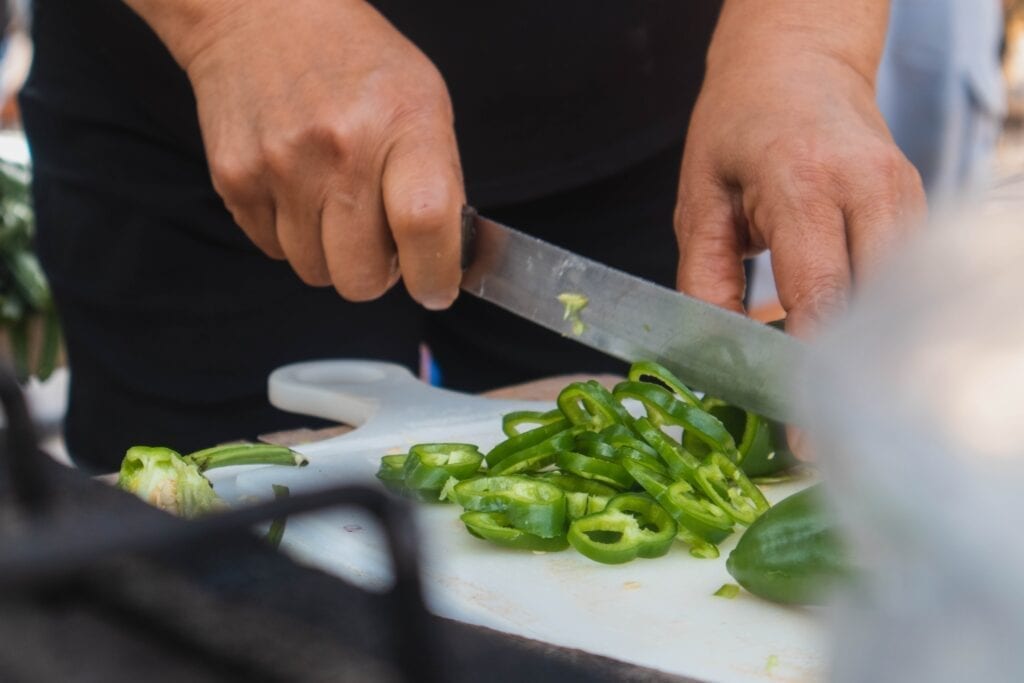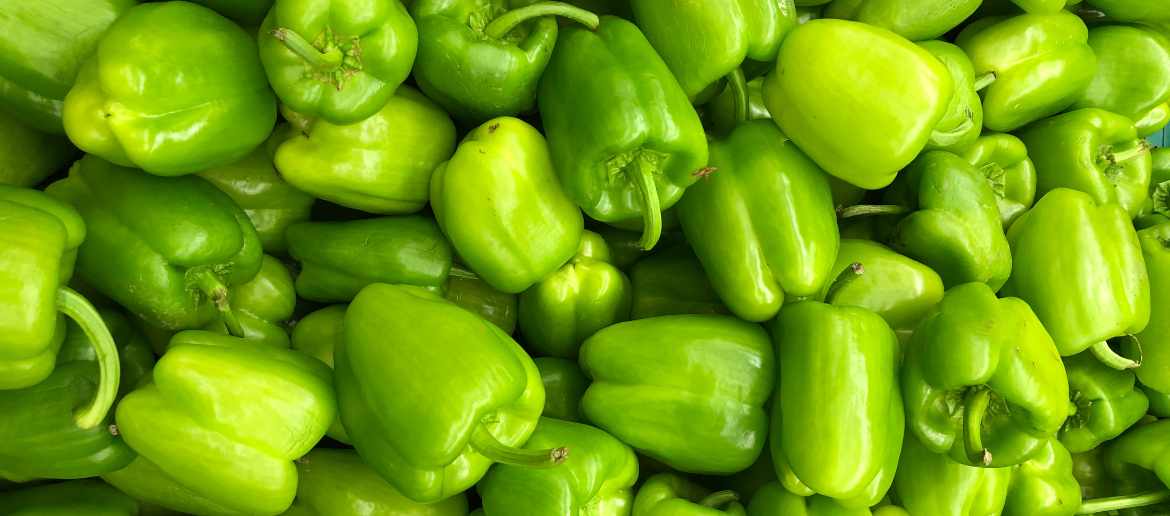You may have read wine tasting notes that refer to pyrazines (peer-uh-zeens) with no further explanation as to what those flavors are. Or, perhaps this is the first you’ve heard of it. Either way, here are the basics you need to know about this fun tasting note, with resources at the end for more detail.
What Are Pyrazines and Where Can I Find Them?
Pyrazines are chemical compounds (technically called “methoxypyrazines”) found in grape skin and stems that are responsible for many “green” flavors in wine. Levels of pyrazines are dependent on viticultural practices, climate, and grape variety.
Green bell pepper is the star tasting note to look for, in addition to green peppercorn, jalapeño, and vegetable flavors like peas and asparagus. In red wines, also look for notes of green peppercorn, green olive, and fresh mint. These flavors also include some herbs, but not necessarily ALL herbal flavors. If you are noting herbs in wine, it’s not always pyrazine.
These flavors used to be considered a total flaw in wine, declared ruined if detected. This isn’t so much the case nowadays, but winemakers must still be careful (especially not to harvest prematurely, which is one factor in causing pyrazines): an imbalance of these flavors can turn unpleasant quickly. However, if done properly, these flavors can add another layer of complexity, surprise, and a certain “zing” a drinker didn’t know they were missing out on.

What Wines Can I Drink to Taste Pyrazines?
Pyrazines are most often found in Bordeaux grape varieties: Cabernet Sauvignon, Cabernet Franc, Merlot, Malbec, and Carmenere. Though you may think of “green” flavors as belonging to white wines, Sauvignon Blanc is the only white wine in this group; New Zealand Sauvignon Blanc is famous for its green bell pepper/jalapeño combo.
If you’re curious about tasting what pyrazines taste like in wines that balance the flavor well—in other words, where it is not considered a fault—try Montes Alpha Cabernet Sauvignon or Montes Alpha Merlot.
Get your green bell pepper on and check out my source below for further details:




